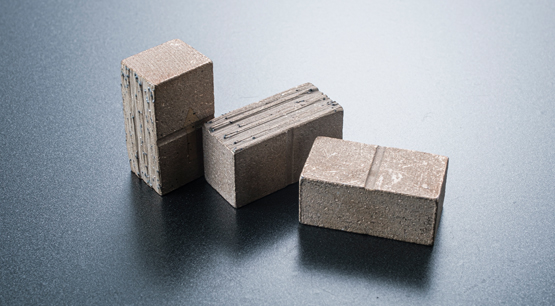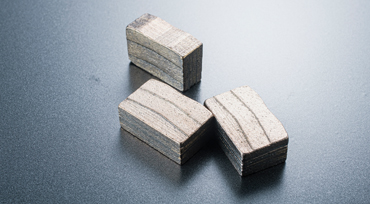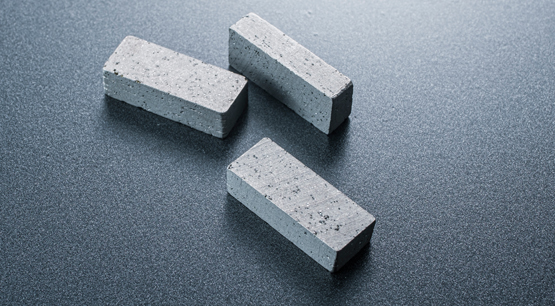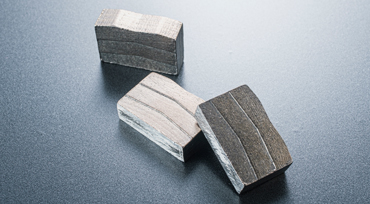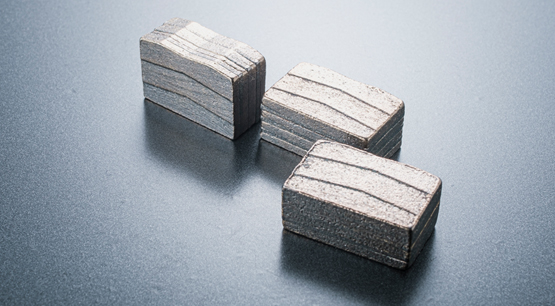The diamond segment matrix bond is mainly sintered from various metals, and the common metal bonds include the following metals.
Copper powder: Copper powder is mainly produced by electrolysis. After electrolysis, the copper powder turns dark red, which is what we often call red copper powder. Copper powder is easy to form and has good compatibility with carbides, especially with framework material WC, with Sn, Zn, Mn, Ni, Ti and other metal powders, it can be made into alloy materials with excellent performance. Of course, copper powder also has some disadvantages. For example, copper powder has poor wettability to carbon materials, so it has a poor grip on diamond. However, if a small amount of cobalt powder and nickel powder are added, this situation will be completely improved.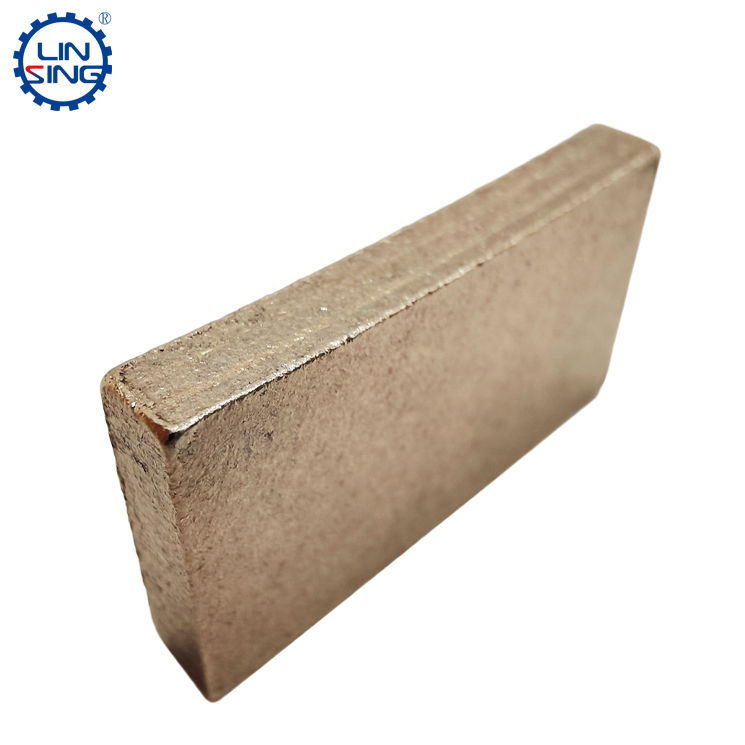
Iron powder: The biggest advantage of iron powder is its low price and strong wettability with diamond, even stronger than cobalt and nickel. In terms of compatibility, the compatibility with WC is also very good, especially when the diamond is carbonized at a high temperature, the strength of the diamond will not be lost, but the holding force of the diamond will be increased. Due to the strong abrasive of the iron-based carcass, it will not be able to cut when cutting soft stones.
Cobalt powder: The main advantage of cobalt powder in the cutter head is its excellent formability and sinterability, In addition, it can increase the bending strength of the matrix, and has a strong bond with the diamond, which increases the holding force of the diamond, and increases the toughness and self-sharpening of the matrix. However, the disadvantages are also very obvious, such as high price, too low density will lead to difficulty in feeding, and due to the large volume compression during the sintering process, the cold pressing mold needs to be designed to be larger, thereby increasing the production cost.
Nickel Powder: Nickel powder has strong toughness and plays a great role in the toughness of the finished cutter head. The alloys sintered with nickel, iron and cobalt powder can obtain very good comprehensive properties.
Tin powder: Tin powder can reduce the melting point of the carcass, easy to improve the wear performance and the gloss of the segment. A small amount of tin can reduce the tension of the liquid alloy during sintering, thereby improving the wettability of the alloy to diamond. But there are also many disadvantages. Adding too much will cause the bonding force between the bond and the diamond is worse and reduce the service life of the segment.
Manganese powder: Manganese powder has good deoxidation and good compatibility with copper and iron, Manganese alloy has the effect of improving the wear resistance of the segment, and can enhance the impact resistance of the segment, However, the disadvantage is also very obvious, that is, manganese powder will lose its binding property after oxidation, so under normal circumstances, manganese powder is rarely used in the production of segments.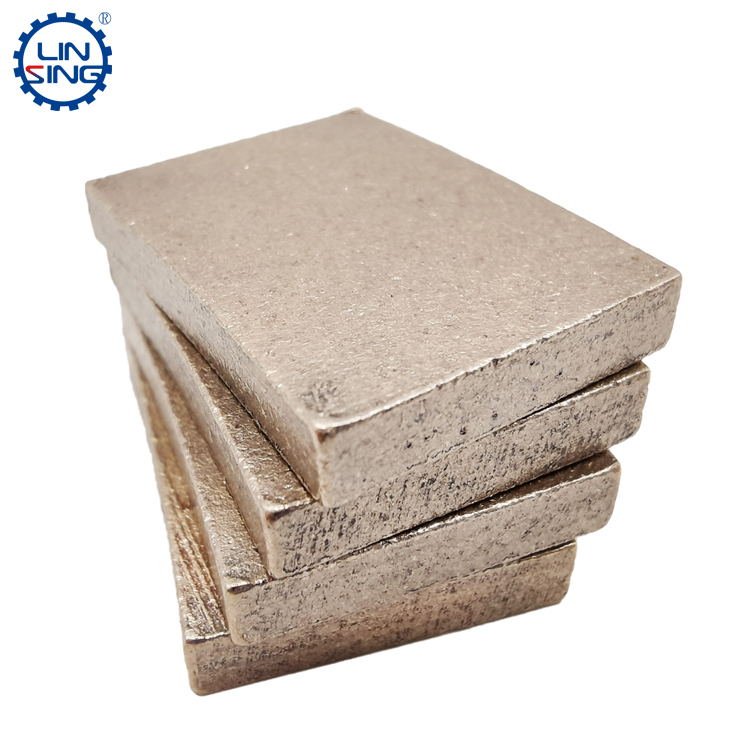
Aluminum powder: A small amount of aluminum powder added to the cutter head can play a role in deoxidation, but too much can easily reduce the holding power of the diamond.
Zinc powder: A small amount of zinc powder can play a role in deoxidation, but at the sintering temperature, the rapid volatilization of zinc powder will lead to the occurrence of environmental pollution.
Tungsten powder: Tungsten has good compatibility with copper, iron, cobalt, and nickel powder, and can increase the wear resistance of the matrix. During the sintering process, WC can also be quickly produced to protect the diamond surface, but the disadvantage is that it is necessary to improve the sintering process. Once the temperature and pressure are not well controlled, the quality of the segment is prone to problems.
Tungsten carbide powder: Tungsten carbide mainly improves the wear resistance of the segment and increases the toughness of the bond, but the disadvantage is that because tungsten carbide does not have metal properties, it will cause the cutter head to become brittle.




